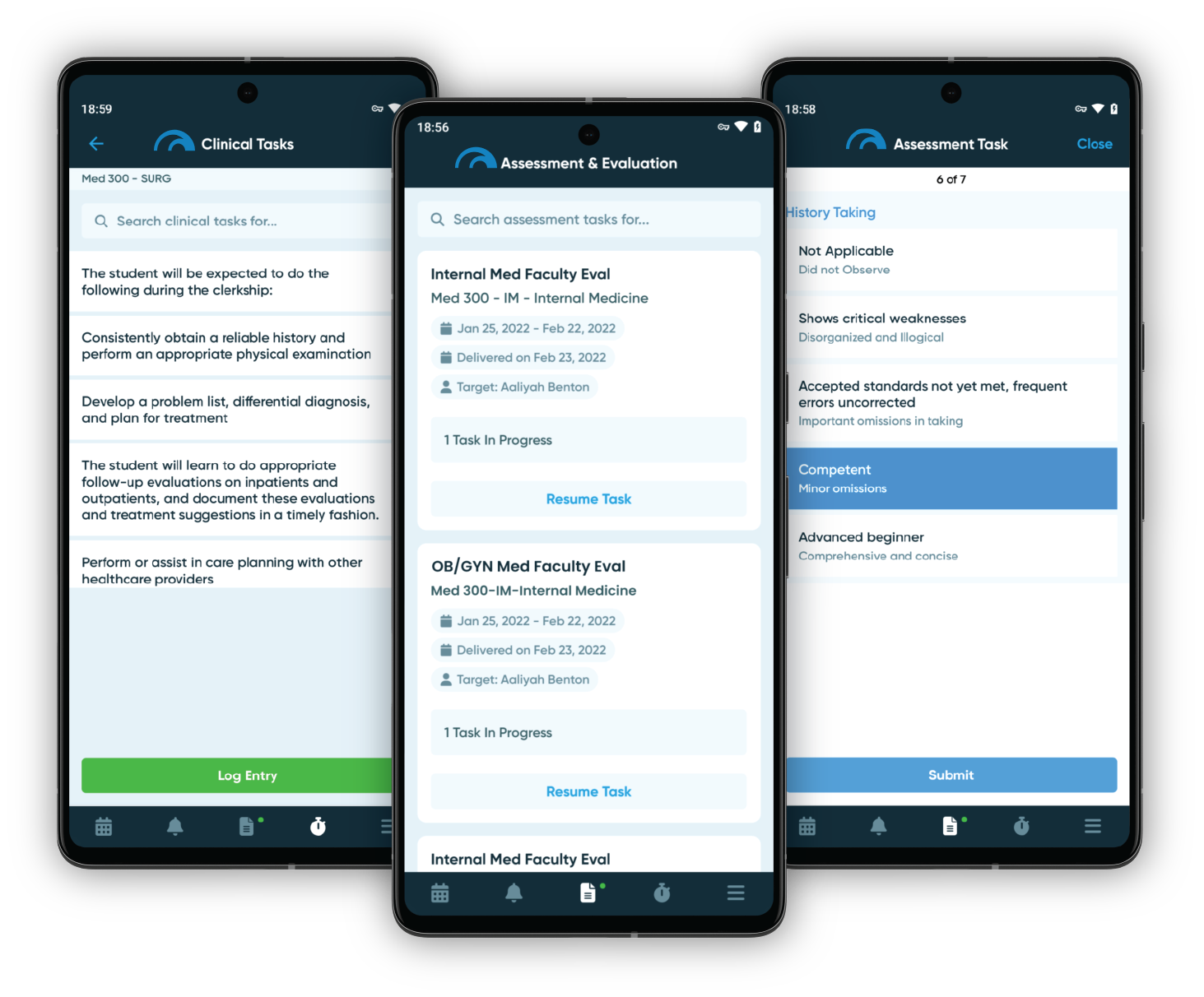Built by schools,
for schools
The complete platform for delivering health professions education
Elentra is the leading health professions education platform to manage and deliver curriculum, assess and confirm competencies, and ensure and report on compliance.
Simplify program administration
Effectively manage accreditation requirements
Reduce costs by consolidating multiple vendor contracts
Ensure institutional oversight
Improve learning outcomes
Providing users with the best possible experience
Why choose Elentra?
The Elentra team have been working with health professions schools for over a decade to create a truly unified solution, providing schools the ability to digitize the curriculum using one platform to drive efficiency and deliver an excellent user experience.
Business Knowledge
The embedded nature of Elentra ensures we have in-depth and current knowledge of the challenges facing health professions schools.
Our Expertise
We have been working with and delivering solutions for health professions schools for over ten years.
Our Passion
At Elentra, we focus on delivering the best possible experience for our users. User experience is something we take seriously and are passionate about.
Highlighted Features
Elentra provides a powerful suite of tools to support health professions schools in delivering exceptional education. Our platform includes curriculum mapping for streamlined program design, advanced analytics for data-driven insights, comprehensive assessment and evaluation tools, efficient clinical rotation scheduling, and robust support for accreditation processes. Together, these features empower educators to enhance program effectiveness and improve learner outcomes with confidence.
Curriculum Mapping
Elentra allows educators to easily align their curriculum with accreditation standards and learning objectives. This powerful tool enables them to create and manage comprehensive, interactive maps of their curriculum, including the ability to track progress, identify gaps, and measure student outcomes.
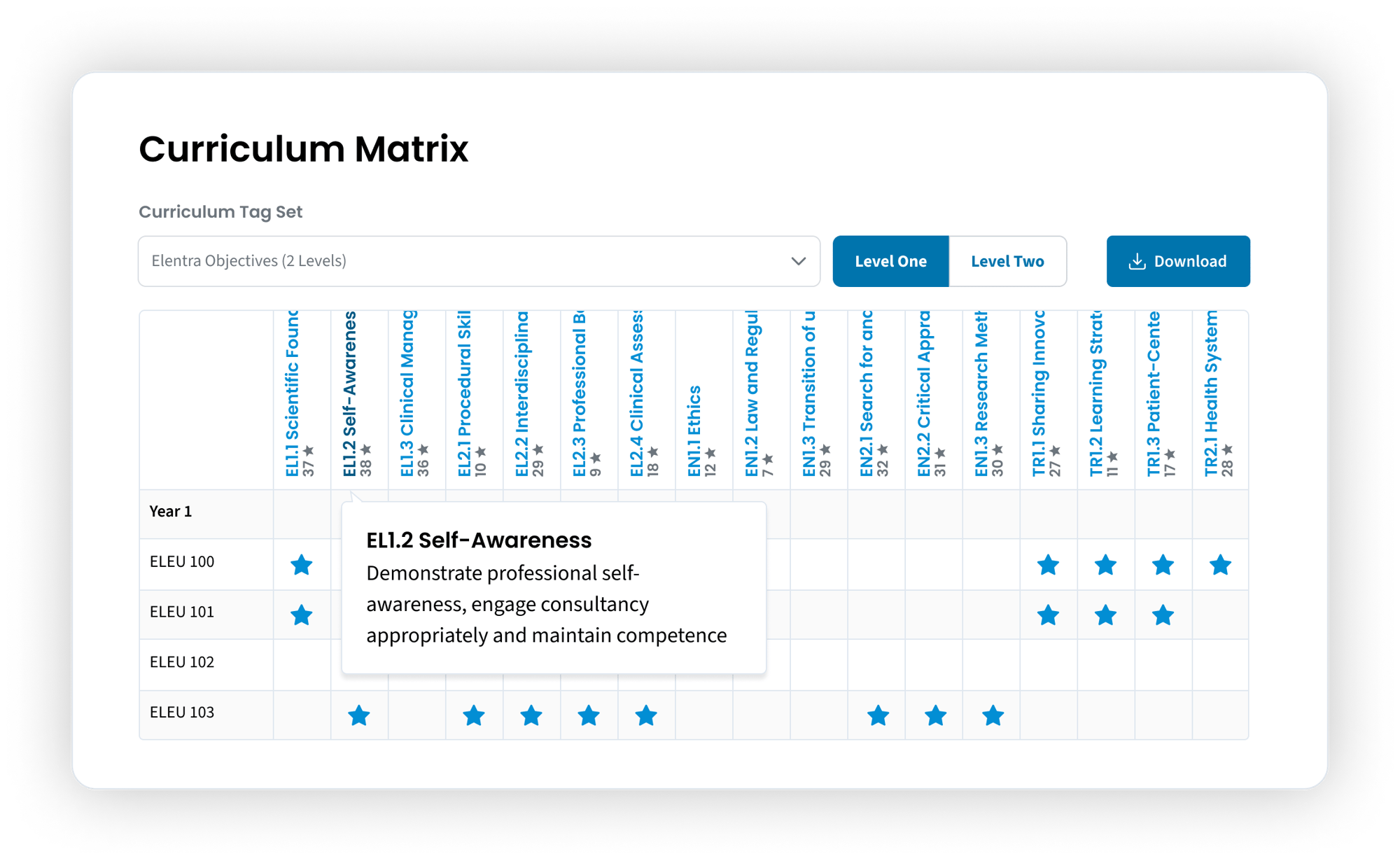
Elentra Analytics
Data-driven decision making: Analytics can provide educators with data-driven insights that can inform instructional strategies and help them make informed decisions about curriculum design, assessment methods, and other aspects of the medical education process.
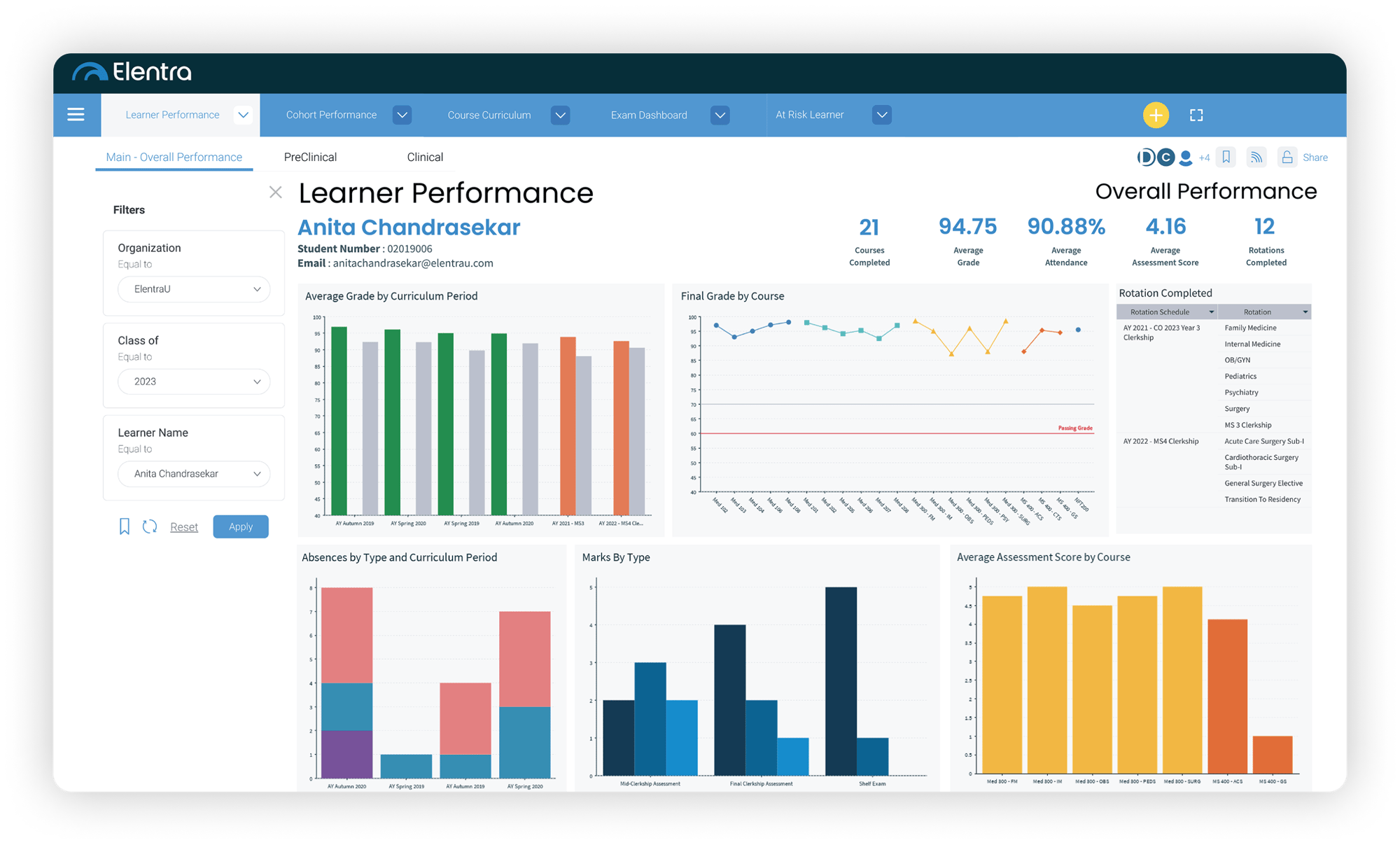
Assessment & Evaluation
Our Assessment & Evaluation module supports a variety of question types, including multiple choice, true/false, and open-ended, as well as the ability to provide detailed feedback to students.
Educators can easily design and administer assessments that align with accreditation standards and learning objectives, and use the data to identify areas where students may need additional support.
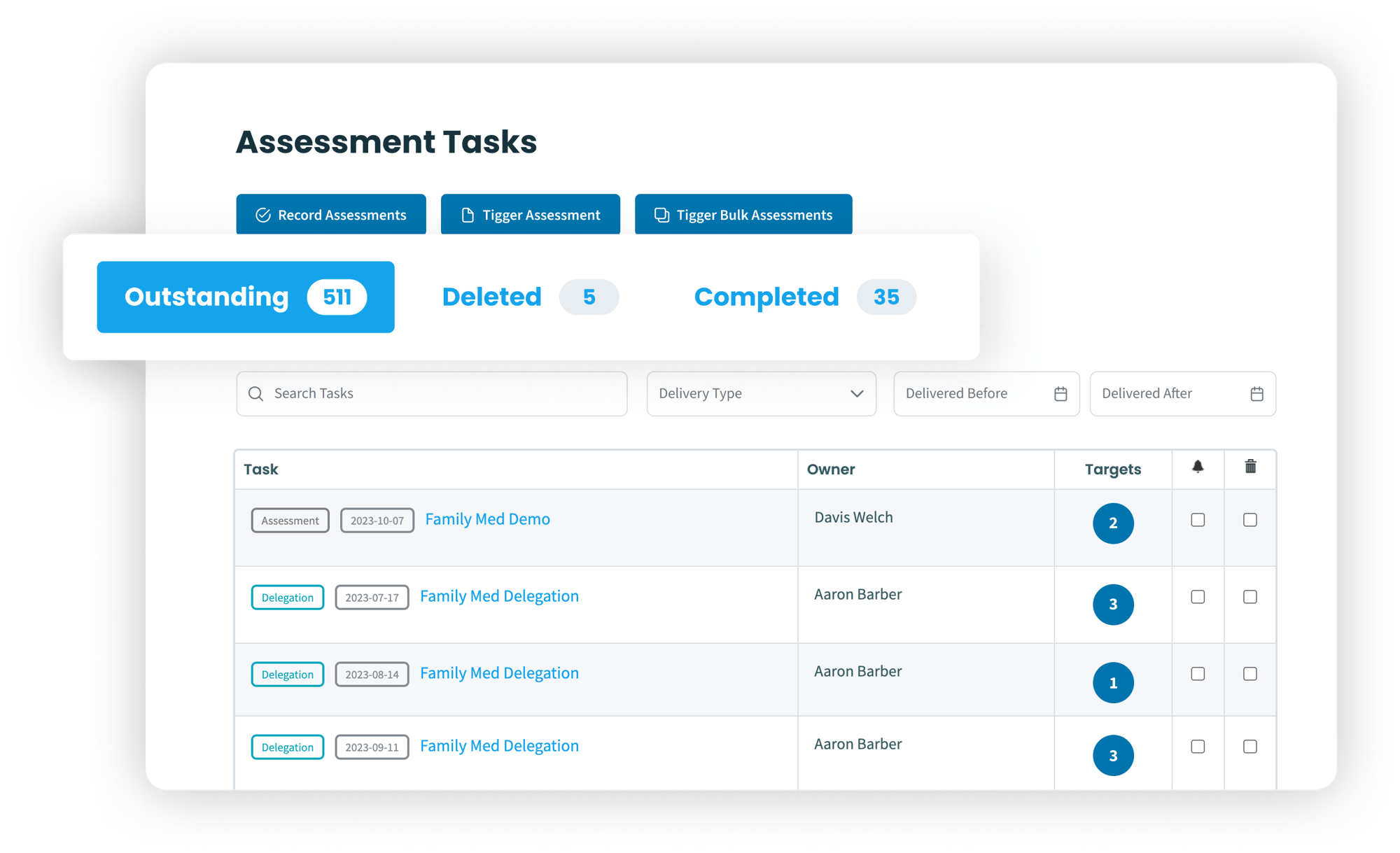
Clinical Experience Management
Elentra streamlines the process of organizing and managing clinical rotations for learners. With this feature, clinical coordinators can easily schedule and manage students’ rotations at various healthcare facilities. Elentra also boasts a leading edge lottery system that builds rotation schedules for you.
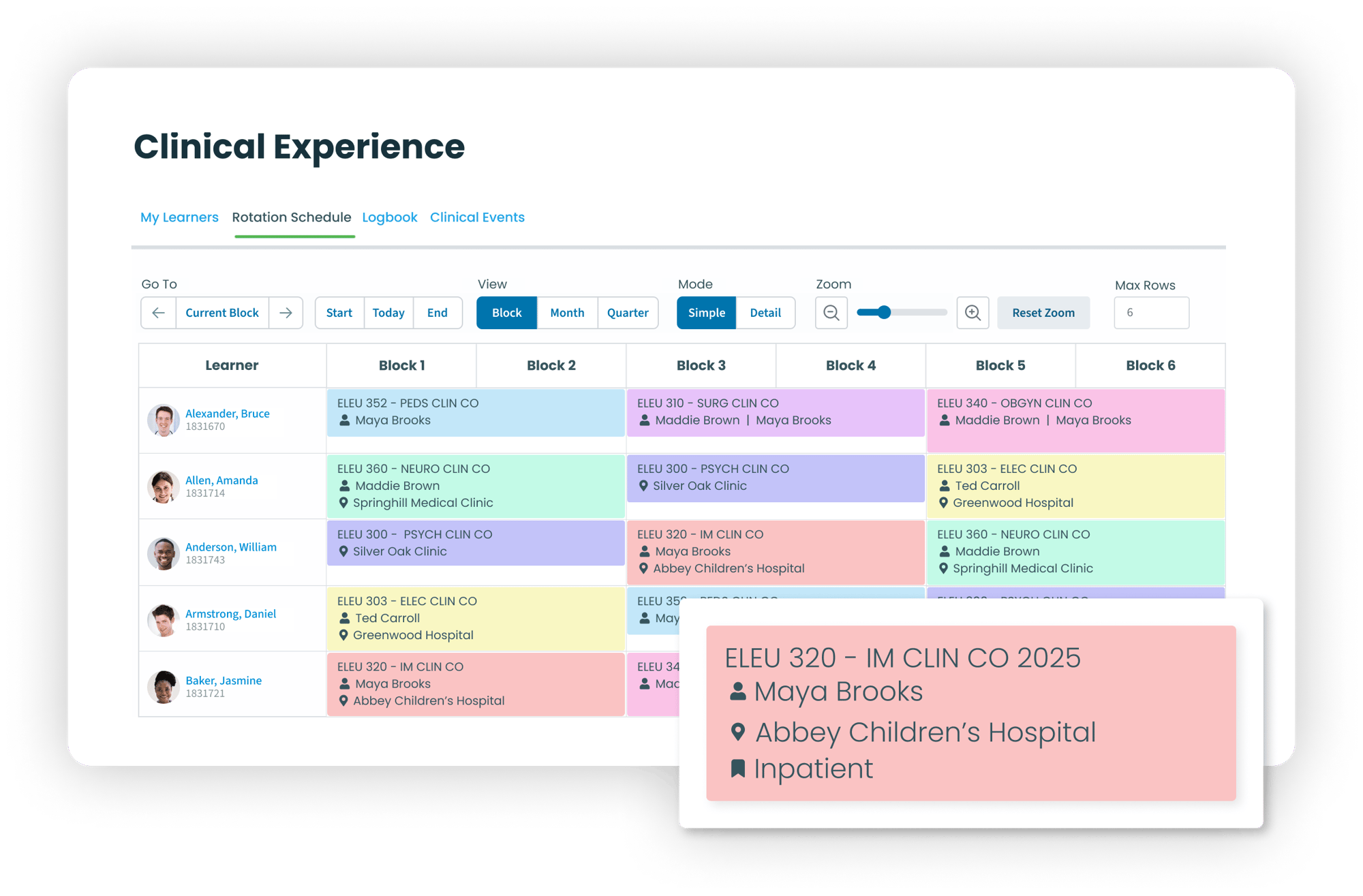
Accreditation
Elentra enables educators to confidently demonstrate the quality of their program to accrediting bodies by aligning the curriculum with accreditation standards and learning objectives, tracking student outcomes, preparing for accreditation site visits, and documenting compliance with accreditation requirements.
Using Elentra to deliver your curriculum will not only make your accreditation process easier it will reduce risk and save your institution time and money.
.png?width=2000&name=Accreditation%20(1).png)
Elentra Mobile App
The Elentra mobile app is available on both iOS and Android.
